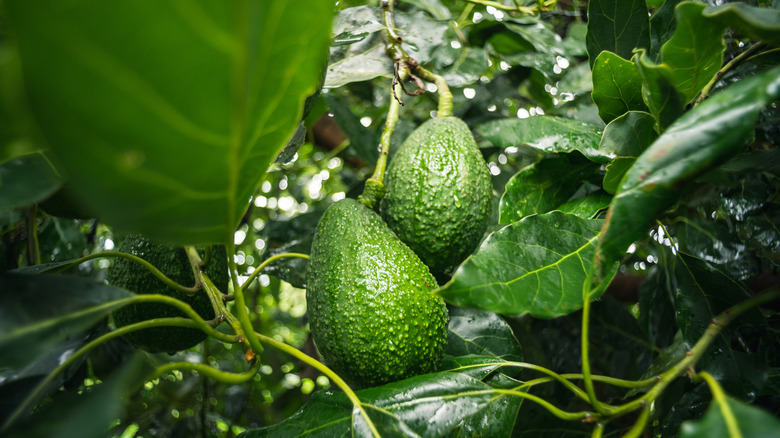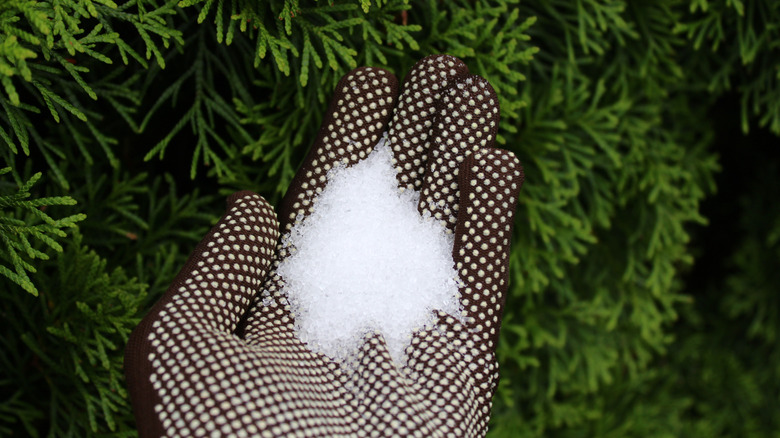The Homemade Epsom Salt Fertilizer That'll Do Wonders For Your Avocado Tree
If your avocado tree has pale or yellowing leaves, or if it seems to be growing slower than usual, it may be missing an essential nutrient — magnesium. In that case, a homemade Epsom salt mix might be just the boost your tree needs. It supplies the magnesium and sulfur that avocado trees may need in small amounts. Sulfur supports chemical processes inside the plant, especially ones related to building proteins. While plants don't need much of it, a lack of sulfur can disrupt these internal functions, which may lead to stunted growth or pale leaves. Magnesium, on the other hand, helps the tree produce chlorophyll, which gives the leaves their green color and supports photosynthesis.
When avocado trees don't get enough magnesium, they may start showing signs of stress. One of the most common symptoms is yellowing between the veins of older leaves, a classic indicator of magnesium deficiency. To fix this, you can apply Epsom salt, which provides a quick and gentle boost of magnesium. Simply dissolve it in water and pour the solution around the base of the tree. It absorbs easily into the soil and helps restore healthy, green foliage.
It also won't disrupt the slightly acidic soil pH that avocados prefer, which makes it a safe choice for home gardeners. It's important to remember that Epsom salt is only a supplement. It does not replace a balanced fertilizer that includes nitrogen, phosphorus, and potassium. However, when used at the right time and in the right amount, Epsom salt can give your avocado tree the extra magnesium it needs to stay healthy and productive.
How to use Epsom salt on your avocado tree without causing harm
If you're ready to treat the yellow leaves on your avocado trees, break out the Epsom salt and a gallon of water. Start with mixing about 2 tablespoons of Epsom salt into the gallon of water. Pour the solution around the drip zone of the tree, being careful not to let it touch the trunk. It's best to apply Epsom salt mixture at the beginning of the growing season, before the tree starts putting out new growth. You can also add another round in late autumn, once the tree begins to slow down. Just make sure not to overdo it. Too much magnesium in the soil can block calcium uptake, which can lead to issues like weak branches or poor fruit quality. It may also wash through the soil and contaminate nearby water sources. Be aware, you should avoid spraying Epsom salt directly on the leaves, as it can cause the leaves to burn.
It's much safer to apply it to the soil and let the roots absorb what they need. Sometimes, even if there's enough magnesium in the soil, your plant might still show signs of a deficiency. That can happen when the soil has too much phosphorus, which makes it harder for the plant to absorb the magnesium that's already there. In that case, adding more Epsom salt won't fix the problem. It might even make things worse by wasting time and masking the real issue. Test the soil first to understand what's really causing the problem, instead of guessing and adding the wrong fix. If you're not sure what's going on, getting advice from a garden expert can save you a lot of guesswork.

